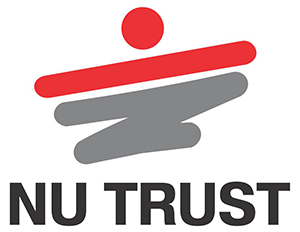
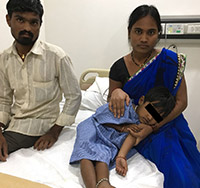
Little did the two Lambani labourers Raju and Bebi Bai realize the long walk awaiting them when their first child was born. They named her Ashwini after the 1st star of the lunar calendar.
While she was the bundle of joy, being the first child for the parents they realised something was wrong with her, early in life.
Ashwini could never seem to control her passage of urine, she appeared to dribble urine all the time.
Ashwini had a problem called “female epispadias”; in this condition the female urine tube does not develop well and becomes short and the mechanisms to control urine are also not well developed. This results in the child leaking urine constantly.
The life of a child who constantly leaks and smells of urine is not one which attracts any positive attention in rural India. The stigma of “smelling bad” and constantly being “wet” plagued Ashwini too.
The worried parents sought care from local doctors till finally at the tender age of 6 months she underwent her first surgery to attempt correction of this problem in Sangli, Maharashtra. The surgery did not help solve her problem; epispadias is not an easy defect to correct. It sometimes requires multiple surgeries to allow the child to void, if at all – from the normal place.
Raju and Bebi decided to accept the cruel deal dealt to them and their child, the wheel of life never stops.
Ashwini continued to grow older, “smelling bad”, “wet”; she has never been schooled even though the parents wanted to send her to one. When she was finally sent to us through one of our colleagues who hails from the same region, she was 6 years old. She had never ever passed urine normally.
Her parents being daily wage labourers neither had the savings nor the help of relatives for the extensive evaluation and surgery required for correcting this condition.
The child was seen by us in August 2017, she underwent evaluation and a tentative plan was discussed with the parents. In February 2018 they returned and after multiple long sessions of discussion between the operating doctors and the mother, father, grandmother and grand father the final surgical plan was drawn up.
We had decided that Ashwini would undergo a long, complex single stage surgery at the end of which she would “not” pass urine from the natural passage. Instead she would have a small opening created at the umbilicus from which her mother and later Ashwini herself could put in a tube and empty the bladder. This would avoid multiple surgeries, would allow both the parents to get back to their daily work, get Ashwini to be “dry” from the next day of surgery.
In what then turned out to be an arduous time for Ashwini , the parents, our doctors, nurses and all the support staff; she underwent a 6 hour surgery. The bladder being small was artificially made larger by using a bit of her intestine, the original opening into her urine passage was closed, a new opening was made into her umbilicus. She stayed for a week in the ICU and gradually recovered from the stress of surgery; all the while monitored by a team of doctors in the ICU, her surgeons, paediatrician, dietician, specialised nurses till she was fit to move into the ward.
We all have managed sick children at home and realize how trying the times can be, and here was a child who had undergone a long and complex surgery. It is a tribute to the parents who never once complained about the troubles they underwent through all this, holding her while she cried in pain( sometimes despite all possible mediations for pain), managing all the myriad tubes going in and coming out of her, waiting till she was able to take food till she smiled again.
On 10th March exactly a month after her surgery Ashwini was free of all tubes.
She was finally and for the first time in her life “dry”.
Her mother has learnt (after days of patient training by dedicated nurses) to put a tube into a small opening at the umbilicus to drain her bladder once in three hours (no more than any other child has to go to the rest room) and empty the new enlarged bladder.
Ashwini is now happy, she does still resist the placement of the tube, but in time she will get used to this like so many other children we have seen. She now is seen in the ward, like all her peers playing with her father’s mobile and watching the latest YouTube videos!!
In a year which saw the World Kidney Day dedicated to chronic kidney diseases in women, children like Ashwini need all our help to live out a long life. In Hindu mythology Ashwini the star is ruled by the Ashvins, the heavenly twins who served as physicians to the gods. They have certainly taken good care of this child.
——– Dr. T Krishna Prasad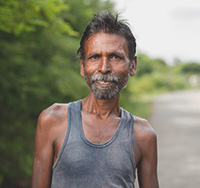
41 year old gentleman from Guyana underwent live related kidney transplant in 2003 and presented with severe sepsis one year later and had a cardiorespiratory arrest from which he was revived and is alive till date 12 years down the line with near normal kidney function.
26 year old male presented with end stage renal disease. Fortunately his sister came forward to donate kidney to him. He is doing well after renal transplant which he underwent 10 years back. Has got married later and has fathered two children.
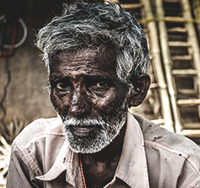
A 47 year male presented after having fever, when he was seen and evaluated by us; we found multiple kidney and bladder stones and to our surprise pieces of a forgotten plastic tube inserted in his kidney 3 years ago. It did not end there, we even found a special tumor which can produce chemicals which can cause very high blood pressures.
In a multi-stage management we first had to temporarily divert urine from his left kidney, after which a unique key hole approach (retroperitoneal) enabled us to remove his tumor safely. This was a prerequisite to do any other surgery as this particular tumor can result in such high blood pressures that it can cause death during surgeries. Following this he underwent multiple staged surgeries to remove all the stones and pieces of the plastic tube. He is today stone free / tumor free and leads an active agricultural life.
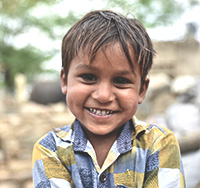
A 12 year old boy was leaking urine continuously from birth. This was because of him having a rare congenital condition (Epispadias) where the front part of his urethra (The tube that connects the bladder to the tip of the penis) was missing.
This also resulted in a defective sphincter (The valve that prevents urinary leakage when we stand or cough). He had already undergone three surgeries elsewhere before he presented to us. Evaluation revealed him to have a damaged sphincter (The valve that controls the Urine from leaking) and a small capacity bladder. He had by then become a social recluse as he was not attending school, because he was at the brunt of his peers since he used to leak urine and he was shooed away due to the emanating smell. After explaining the situation to his parents and the child, he underwent major reconstructive surgery.
His bladder capacity was improved by adding a bowel segment and he underwent a Mitrofanoff (An intestinal tube constructed between the bladder and the skin) so that he can do self catheterization to empty his bladder on a timed basis. For the first time he was completely dry, the child is now attending school regularly and is back to his joyous self. His kidney function is normal.

A 32 year male, recently married had come with acute urinary retention. Imagine the anxiety in spouse and family. He was managed by trocar cystostomy (to relieve the retention) and then after evaluation diagnosed as stricture urethra of 4 cm long in bulbar part. He underwent buccal urethroplasty and he was able to pass urine like never before. Imagine the plight of a 52 yr old lady, told to come every 6 months to year to dilate the urine passage area. She had slow urinary stream and was diagnosed stricture urethra 5 yr ago and had undergone urethral dilatations 5 times so far. She underwent a reconstructive procedure called buccal mucosal graft urethroplasty 1 year ago after which she is voiding normally like any other women of her age. During follow up 1 year after surgery she is doing well.
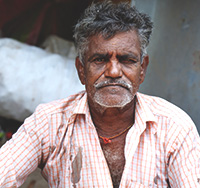
55 year old gentleman who had a renal transplant elsewhere was following up with us. Presented with sepsis and multiorgan failure. Was in ICU needing ventilation and ionotropic support and needed dialysis also. CRRT was initiated which stabilised him and he improved following this.
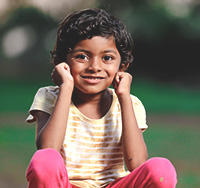
A three year old child diagnosed with right renal mass (wilms tumour) posted for removal of right kidney (right radical nephrectomy) came to anaesthesiologist for pre anaesthesia checkup. Parents had lot of anxiety, apprehension in subjecting their little one for a major surgery under anaesthesia.
They were worried if the child will have pain during the surgery and will the child be aware of surgery going on and will the child be able to recall whatever happened in operation theatre. Like this, they had endless queries and worries. Understanding all this, a detailed discussion was done with parents to explain about anaesthesia and give them confidence that their child will be comfortable in the intra operative and post operative period.
Also their main anxiety was that child might need multiple injections to take care of the pain after surgery and every injection by itself is painful and unbearable for the child. Parents were taken into confidence and made as comfortable as possible.
On the day of surgery, local anaesthesia cream was applied to child’s hand to make the injection painless. Child was accompanied by parents till the transfer area in the O.T. As child’s hand was numb, i.v cannula placed in front of parents when the child was conversing with parents without child’s knowledge that injection was being given. Then we gave some sedation through i.v cannula and child went into sleep comfortably in parents presence and even parents were happy to see their child going to sleep without any noise and they handed over child to us with more confidence. With all precautions, child was given general anaesthesia and caudal epidural catheter placed under anaesthesia for management of postoperative pain.
Generally, postoperative pain is very severe in the first 24-48 hours requiring high dose of analgesics. However, in a child using too many analgesics is associated with side effects like excessive sedation, vomiting and the child becomes very fussy and noisy, with the sight of injection and its very depressing and painful for parents to see that.
A child in pain is not only a nightmare to manage for parents and doctors but is also associated with complications like bleeding and pulling of tubes. However, we gave analgesics to this child continuously through caudal catheter and all the time child was pain free and best part is that child was not even knowing that she was receiving injections for pain relief.
On the second postoperative day, child was walking, playing and cheerful with the infusion pump with analgesics in her pocket. Parents were extremely happy and thankful as they had never imagined that after the surgery the child could be so painfree and comfortable without any additional injections. It was very satisfactory for us too.
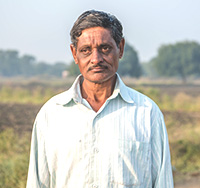
A snake bite in 2002 led Mr. R to go into kidney failure. His brother came forward and donated his kidney in 2004. The transplant was successful but after a few years Mr. R stopped his medicines and the kidney got rejected. He was back on dialysis. We were pleasantly surprised by the support of his family when his other brother came forward to donate his kidney. The transplant was successful and the family has ensured continued its support. With regular medications he is now off dialysis. We have other such patients in whom the family support has been overwhelming and not one, but two family members have readily donated kidneys to give a second lease of life to a patient on renal failure. We salute the siblings, parents and spouses who have come forward for kidney donation. In any transplant program, they are the real heroes.
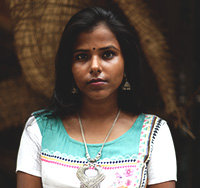
Born with nonfunctioning lower limbs, a tumor-like swelling from the spinal cord, and unable to sit or walk as a child, she was a dreadful gift as a first born to her parents. She had no control over her bowels. She also had no control of her urination. Her diaper was always full of urine and stools. From such a stage, as an infant, doctors at NU Hospitals took it as a challenge to resurrect Gowri into an independent, competent young lady, equal to the other people on the planet, and conduct carry her life with respect and dignity.
Several treatments and surgeries later, she is able to walk around with crutches, manages to hold urine in the bladder and empty herself, and manages her bowel to timing. She now even drives a car suitably modified for her purpose and no less of a human being any other able bodied person.
She has finished her Masters in engineering, and now proudly works in a software company in Bengaluru. Gowri’s success is not just one of a leaking bladder that has been treated, but of a total human being that is now the joy of her parent’s life.
